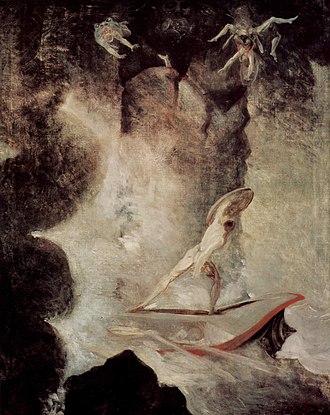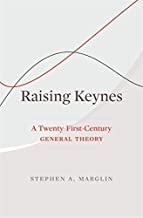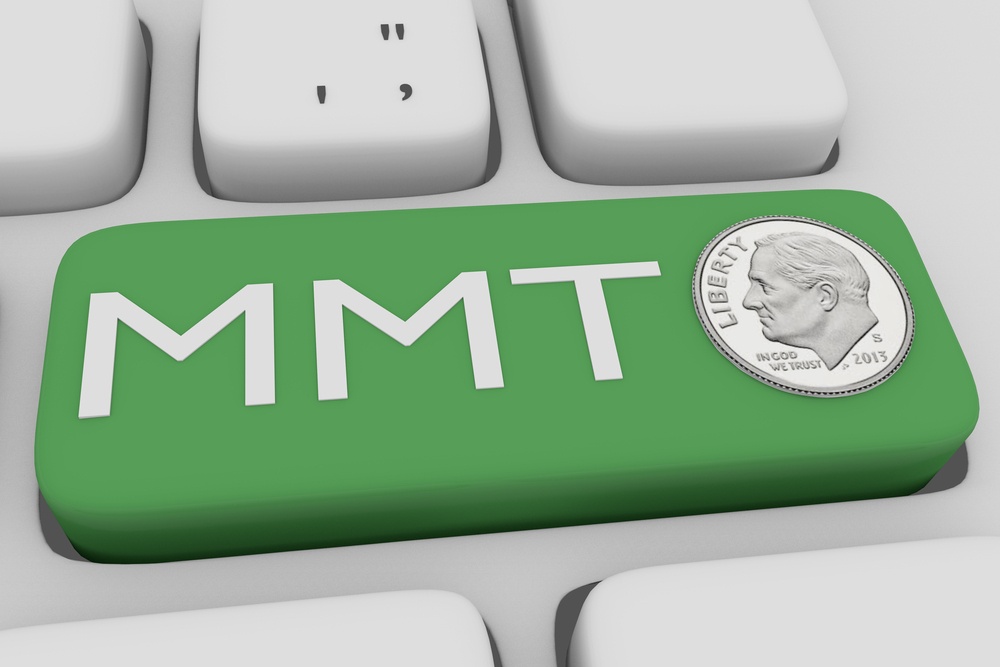By Michael Roberts
Let me start this post by quoting Noah Smith, liberal economist and Bloomberg journalist from his blog on Modern Monetary Theory (MMT): “The New York Times (NYT) just came out with a big glowing writeup of MMT, entitled “Time for a Victory Lap*”. This article aroused the anger of just about every macroeconomist on Twitter, and with good reason — it demonstrates very little understanding of the issues at play or the state of the policy debate, and it rhetorically elevates a fringe ideology to a position of importance and centrality that it neither occupies nor deserves.The NYT article on MMT, written by Jeanna Smialek, is mostly a puff piece about Stephanie Kelton, MMT’s most well-known proponent. In glowing tones, it describes Kelton’s clothes, her office, her house, her neighborhood, her blog, her manner of speaking, her personal story, and so on, calling her “the star architect of a movement that is on something of a victory lap”. Very little is written about the background of the macroeconomic policy debate, and what does appear is highly questionable.”
Economic theory debate hits social media
The NYT article also provoked ‘orthodox’ Keynesian gurus like Larry Summers and Paul Krugman into more scathing comments on MMT. Summers tweeted: “I am sorry to see the @nytimes taking MMT seriously as an intellectual movement. It is the equivalent of publicizing fad diets, quack cancer cures or creationist theories,” A fierce debate followed in the social media and encouraged new critical articles on the validity of MMT.
However, in this particular post, I am not going to repeat all the arguments from a Marxist perspective against the main propositions of MMT. You can read these in a number (six, I think) of posts on this blog; in this longer piece here; and in various video debates on my You Tube channel.
But given the latest discussion, I can add two things which are a reminder of MMT’s faultlines: first as an explanation of money flows in a capitalist economy; and second, whether government spending financed by the state issuance and the ‘creation’ of money can deliver economic growth, full employment and rising incomes without touching the sides of capital’s exploitation of labour.
MMT faultline 1 – issuing money
First, MMT argues that a state with ‘sovereign control’ over its currency (eg US government and the dollar) can issue as much as money it likes. This is obviously true as the state controls the issuance of the national currency. But what is not true is that the spending of this money (dollars, euros etc) automatically creates more value in things and services in an economy. As Keynesian Michael Pettis has argued before and repeats in a new article: “What MMT really shows is that there are no direct spending constraints on a government that is monetarily sovereign. It can always create money or debt to fund its spending needs without first needing to obtain the funding. This doesn’t mean, however, that there are no indirect constraints. In fact, there are always economic constraints. This is because an economy cannot consume and invest more than it produces and imports.”
I would put it another way. Money is not value; it is the representation of value. More money does not mean more value. If there is no more value created, then more money (dollars) just represents the same value: the money has depreciated in its ‘purchasing power’ or in its value per unit of currency. And there is no guarantee that increased government spending, whether financed by issuing more currency (MMT) or more government bonds (orthodox Keynesian) will lead to more value. That depends on the decisions of capitalist companies to invest in more labour and/or technology. And that in turn depends on whether more profit can be made. This is what Keynesian theory and MMT (really just an offshoot of Keynesian theory) do not recognise. By the way, you can read a recent riposte to this critique of MMT, https://gimms.org.uk/2021/11/14/garzon-reply-roberts-macro-modelling-mmt/, by Eduardo Garzón who shows exactly where the difference is between Marxist monetary theory and MMT. Of course, I consider the former a better explanation of a capitalist monetary economy and Garzon the latter.
MMT faultline 2 – price inflation
But the other faultline in MMT is what happens when increased government spending financed by the ‘printing’ of money does not lead to increased value but instead to the inflation of prices. It is ironic that just as the NYT claims that MMT has ‘won the day’ in refuting the view of mainstream macro that balanced budgets and controls on public debt are required ie austerity, along comes a huge hike in inflation rates. Mike King in his blog says: “The rise in inflation was exacerbated by supply chain inefficiencies and disruptions, but it was almost certainly propelled to some extent by Covid relief spending and the Fed’s extremely loose monetary policy. That was a reminder that aggregate demand has a limit — that you can only boost the economy with fiscal and monetary policy so much before costs start to appear. (Those costs, as any orthodox macro theory will tell you, are due not to any issue with government financing, but to the economy’s real constraints — the limits of real resources available.).”
MMT proponents have always recognised that if an economy reaches ‘full employment’ and cannot grow any more, then inflation could ensue. Their answer is that the government should then increase taxation to ‘destroy’ the surfeit of money spending. But as I have argued before, in effect, MMT policy then becomes just like orthodox Keynesian macro management ie trying to tune the economy along the narrow path of growth without inflation with a judicious use of taxes and spending. Unfortunately, the anarchic capitalist accumulation process cannot be ‘adjusted’ in this way – as the failure of Keynesian macro management in the last major bout of high inflation and low real GDP growth in the late 1970s showed.
Indeed, in a new paper on the efficacy of MMT’s key policy proposal to achieve full employment, a Job Guarantee (JG), which I have also commented on in previous posts and papers, Jackson Mejia and Brian C. Albrecht argue that “the JG does nothing to stabilize inflation under a discretionary policy regime.” What they mean by this is that governments with adjustments to government spending and taxation cannot keep the Job Guarantee at the right level to achieve full employment and control inflation – there is a trade-off.

They quote leading MMT exponents, Mitchell, Wray, and Watts (2019, Ch. 19) who write, “By design, a JG programme is a complement to. . . fiscal policies that aim to finetune total spending, and welfare or other social safety nets.” And again, MMTers Fullwiler, Grey, and Tankus (2019) suggest that “varying tax rates and other inflation offsets should be included in the budgeting process from the outset.” But as the authors of this paper conclude: “consistent with other findings of central bank inflation management under discretion, we find that inflation management under discretionary fiscal policy is subject to the same problem.” In other words, Keynesian fiscal management, whether orthodox or MMT-JG, cannot adjust effectively between the Scylla and Charybdis of full employment and inflation.
Call for more attention to Marxist and post-Keynesian economics
But that’s enough on MMT for now. In this post, I want to concentrate on what Larry Summers tweeted further on. Summers complains that one of the reasons that mainstream economics and central bankers got it wrong about the current bout of inflation in the major economies is that they and the financial media do not pay enough attention to the views of heterodox economics.

Summers appears to want to show he is a ‘pluralist’ in his approach to economics, unlike some. He attacks the NYT and economic journalism in general for “its neglect of Marxist and post-Keynesian scholarship most of which is very critical of my views and policy choices”. Summers then argues that “the NYT should give more attention to Marxist scholars like Steve Marglin, whose book Raising Keynes deserves extensive debate.”
What? Who he? some of you might exclaim. Well part of the reason that Summers cites Stephen Marglin is that Marglin is a longstanding member of Harvard University’s economic department, the university in which Summers is an emeritus professor and was formerly President (when he got into trouble for claiming that women were poor at science). It may be that Marglin is the only ‘Marxist’ economist that he has read.
Stephen Marglin’s ‘Marxist’ credentials
Marglin started out as a neoclassical economist and was regarded, even while still an undergraduate, as the star of Harvard’s economics department. But since the late 1960s, Marglin moved away from mainstream economics. He became a Leftist but describes himself as a Marxist “only in the sense of not being anti-Marx.” – so not a very strong attachment. Marglin apparently recognised that capitalists got rich, not because they were smarter than the average worker or because their factories etc were more efficient than workers self-producing, but because of their monopolisation of the means of production, which meant they got ‘rents’ out of production (note, no use of Marx’s category of surplus value). Capitalism also controlled the manufacture of knowledge.
‘Marxist’ Marglin’s new book, Raising Keynes: a 21st century General Theory, argues that Keynes’ radical ideas have been distorted and submerged by mainstream neoclassical economics. Modern Keynesianism has become a theory that claims capitalist production is fine except for some imperfections in markets. All government has to do is to intervene or manage the economy to compensate for these imperfections, or what is sometimes called the ‘warts’ on the smooth body of the ‘free market’ economy. In the case of macro management, the imperfection is ‘sticky’ prices or wages, which stop a capitalist economy from reaching full employment ‘equilibrium’. In a slump prices and wages should adjust downwards in order to reach a full employment equilibrium. But if there is monopoly pricing and trade unions, then the prices of commodities and labour become ‘sticky’ and the economy trundles along at less than full employment.
In his new book, Marglin, like Joan Robinson and others before him, reckons this view of Keynesianism is a travesty of Keynes. It is what Joan Robinson once calls ‘bastardised Keynes’. Marglin claims he is rescuing “the central insight of John Maynard Keynes’s great work, The General Theory of Employment, Interest and Money, that capitalism left to its own devices has no mechanism for guaranteeing full employment, and that consequently the government must provide a visible hand to work in tandem with the invisible hand of the market.” Raising Keynes shows how and why the orthodox reading of Keynes is wrong and substantiates Keynes’s insight that, even if you strip capitalism of its warts, you still have a system which has no mechanism for reliably producing enough jobs. So “we need the government, not on an occasional, intermittent basis, but all the time, in the long run as well as in emergencies.”
Another attempt at a ‘radical’ interpretation of Keynes
But I find nothing new in this ‘radical’ interpretation of Keynes. Marglin may think he is resurrecting Keynes from the dead, but several ‘Marxists’ and post-Keynesians have done this before him. For example, in an interview, winners of the Leontiev prize, Foley and Taylor claimed that: “Keynes saw capitalism’s general state as allowing almost arbitrary unemployment: hence his “General Theory.” Full employment was a lucky exception… calling full employment the general state and allowing one unlucky exception turns Keynes upside down.”
Moreover, does this revelation about a ‘heterodox’ Keynes make Marglin a Marxist? Well, it’s true that over 160 years ago, Marx reached the same conclusion as radical Keynes and Marxist Marglin that capitalism can never sustain full employment. But Marx’s theory was based on his law of general accumulation and the emergence of a permanent ‘reserve army of labour’. This ‘surplus to requirements’ workforce emerged because, in competition, capitalists strive to increase profits by investing more into technology relative to the labour force. In doing so, capitalists tend to shed labour for machines, and then draw on the surplus pool of labour according to the cycle of production.
But this theory of permanent ‘underemployment’ is not the same as that of Marglin’s ‘radical’ Keynes. For Marx, the failure of capitalism to deliver full employment is based on the contradiction between the capitalist drive for profit and social needs. Nothing is produced under capitalism unless it can make a profit. In contrast, Keynesian theory generally ignores profits as a driver. This is a fundamental difference and it shows in economic policy.
Belief that capitalism can be made to work
For what is Marxist Marglin’s policy solution to achieve full employment?. Well “the government must provide a visible hand to work in tandem with the invisible hand of the market.” So it is not the replacement of capitalist mode of production and the ending of the contradiction between private profit and social need. Instead, government must help capitalist production to work better. Indeed, Marglin’s practical example of this is the Roosevelt New Deal in the 1930s. According to Marglin, the New Deal “arrested the fall in prices and wages and set the stage for the gradual recovery of output and employment”. Really? By 1939 unemployment rates were still very high and the US economy was still struggling. Only in the ‘war economy’ from 1940 onwards was full employment achieved, when government took over the bulk of investment and employment decisions from private capital for the war effort. The war economy did not ‘work in tandem’ with the ‘invisible hand of the market’ but replaced capitalist production entirely, if only for a few years.
Anyway, it is just not true that Keynes was some sort of radical or socialist who rejected capitalism. As he wrote: “For the most part, I think that Capitalism, wisely managed, can probably be made more efficient for attaining economic ends than any alternative system yet in sight, but that in itself it is in many ways extremely objectionable. Our problem is to work out a social organisation which shall be as efficient as possible without offending our notions of a satisfactory way of life.” Moreover, the profit motive must remain: “The loss of profit may be due to all sorts of causes, but short of going over to communism there is no possibility of curing unemployment except by restoring to employers a proper margin of profit.” As Keynes argued that “Economic prosperity is…dependent on a political and social atmosphere which is congenial to the average businessman.” He had little respect for Karl Marx, calling him “a poor thinker,” and Das Kapital “an obsolete economic textbook which I know to be not only scientifically erroneous but without interest or application for the modern world.”
Two years ago, another ‘Marxist’ James Crotty published a book, called Keynes against Capitalism, in which he claimed that, far from being a conservative, Keynes was in fact a socialist, if not a revolutionary one like Marx. “Keynes did not set out to save capitalism from itself as many think, but instead reckoned it needed to be replaced by a liberal form of socialism.” Although what Keynes describes as liberal socialism was really the so-called mixed economy of capitalist combines and government control (which Marglin seems to advocate too), all run by “an elite of business managers, bankers, civil servants, economists and scientists, all trained at Oxford and Cambridge.”
Keynes’s belief in capitalism and technology
Above all, let me remind readers that this radical Keynes appears to be only concerned with getting full employment within a capitalist economy. Keynes had little or nothing to say about global poverty and inequality; he was an imperialist in policy; and he claimed that capitalism would eventually solve the problem of lack of work through technology. The problem of the 21st century would then be one of ‘too much leisure’ because everybody would be on a 15-hour week!
It is this sort of ‘Marxist’ economics to which Summers wants us to pay attention. But as Austrian School economist Joseph Schumpeter once commented “[T]here are the attempts to Keynesify Marx or to Marxify Keynes….. It is in fact possible to enrich the meanings of both these authors by points culled from the other, (but) they are at opposite poles in matters that are of decisive importance analytically.” Rather than try to resurrect Keynes as Marglin aims to, it would be better to let him rest in peace.
From the blog of Michael Roberts. The original, with all charts and hyperlinks, can be found here.



